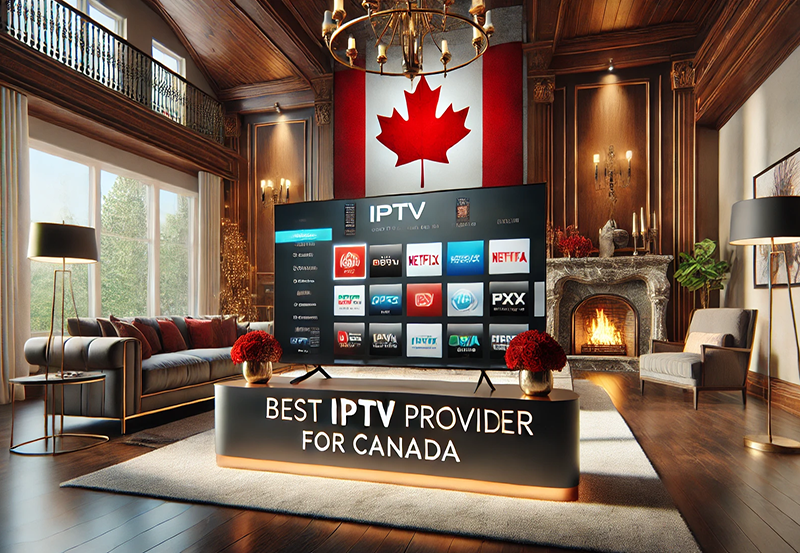How IPTV Works: A Simple Explanation for Beginners
IPTV (Internet Protocol Television) has transformed the way we consume TV, offering an alternative to traditional cable and satellite services. It delivers TV channels, on-demand content, and live broadcasts via the internet rather than using physical cable or satellite infrastructure.
This guide provides a simple explanation of how IPTV works and why it’s gaining popularity among viewers worldwide.
What is IPTV?
IPTV stands for Internet Protocol Television, a technology that streams television content over the internet. Unlike traditional broadcasting methods, IPTV uses IP networks to deliver digital content, giving users more control and flexibility over what they watch and when they watch it.
How IPTV Works
IPTV operates by streaming media content through internet protocols, enabling users to access live TV, VOD (Video on Demand), and time-shifted TV on various devices. Here’s a step-by-step breakdown of how it works:
1. Content Acquisition
IPTV providers acquire content from various sources:
- Live TV feeds (e.g., sports channels, news).
- Licensed movies and TV shows.
- On-demand libraries.
2. Content Encoding
The acquired content is converted into a digital format suitable for streaming:
- Compression: Reduces file sizes using codecs like H.264 or H.265.
- Encoding: Ensures compatibility with internet streaming.
3. Storage and Servers
The encoded content is stored on data servers for on-demand access or streamed live through media servers. These servers ensure that content is available whenever a user requests it.
4. Delivery to Users
IPTV uses the following internet protocols to deliver content:
- HTTP (Hypertext Transfer Protocol):
- Commonly used for on-demand streaming.
- UDP (User Datagram Protocol):
- Ensures low-latency delivery, ideal for live TV.
- RTSP (Real-Time Streaming Protocol):
- Controls playback for live and interactive content.
5. User Access
Users access IPTV content through an IPTV player on their preferred device:
- Smart TVs: Built-in apps or external IPTV players.
- Streaming Devices: Firestick, Android TV boxes.
- Mobile Devices: Smartphones and tablets.
- PCs: Media players like VLC.
6. Playback
When a user selects content:
- The IPTV player sends a request to the server.
- The server streams the requested content to the user’s device in real time.
- The player decodes the stream and displays it on the screen.
Types of IPTV Services
1. Live TV
- Streams TV channels in real-time, similar to traditional broadcasting.
- Examples: News, sports, and live events.
2. Video on Demand (VOD)
- Offers a library of movies and shows that users can watch anytime.
3. Time-Shifted TV
- Allows users to watch previously aired programs.
- Includes features like catch-up TV and pause/replay live TV.
4. Pay-Per-View (PPV)
- Provides access to exclusive events for a one-time fee.
Advantages of IPTV
- Flexibility:
- Watch content on multiple devices, including TVs, smartphones, and tablets.
- On-Demand Access:
- Choose what to watch and when to watch it.
- Cost-Effective:
- Generally cheaper than traditional cable subscriptions.
- High-Quality Streaming:
- Supports HD and 4K resolution.
- Personalization:
- Customize channel lists and preferences.
How IPTV Differs from Traditional TV
| Feature | Traditional TV | IPTV |
|---|---|---|
| Delivery Method | Cable/Satellite | Internet |
| Content Availability | Fixed schedules | On-demand and live streaming |
| Device Compatibility | TVs only | Multi-device (smartphones, PCs) |
| Interactivity | Limited | High (VOD, catch-up TV) |
| Cost | Higher | Cost-effective |
Setting Up IPTV
To start using IPTV:
- Choose an IPTV Provider:
- Subscribe to a service offering M3U playlists or Xtream Codes.
- Install an IPTV Player:
- Download a compatible app for your device.
- Load Your Playlist:
- Add the M3U link or Xtream Codes provided by your IPTV service.
- Stream Content:
- Browse and enjoy live TV or on-demand content.
Common Terms in IPTV
- M3U Playlist:
- A file containing links to live TV channels and on-demand content.
- EPG (Electronic Program Guide):
- A digital schedule showing upcoming programs.
- VOD (Video on Demand):
- A library of movies and shows available for streaming anytime.
- Catch-Up TV:
- Lets users watch previously aired shows.
- IPTV Player:
- An app or software used to stream IPTV content.
Challenges of IPTV
- Internet Dependency:
- Requires a stable and fast internet connection (10 Mbps for HD, 25 Mbps for 4K).
- Legal Concerns:
- Ensure your provider has the rights to stream licensed content.
- Buffering Issues:
- Poor-quality streams may buffer during playback.
The Future of IPTV
With advancements in 5G, AI-powered recommendations, and immersive experiences like VR/AR, IPTV is poised to dominate the entertainment industry. It offers a level of flexibility and personalization that traditional TV services cannot match, making it the go-to choice for modern viewers.
Conclusion
IPTV delivers a more flexible, cost-effective, and personalized viewing experience compared to traditional cable and satellite TV. By understanding how it works, you can leverage its full potential and enjoy seamless access to live TV, on-demand content, and much more.
Top IPTV Apps for Android and iOS: Stream Anywhere, Anytime





